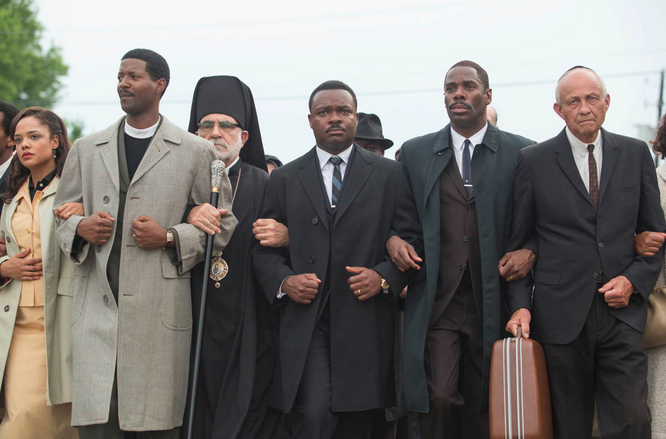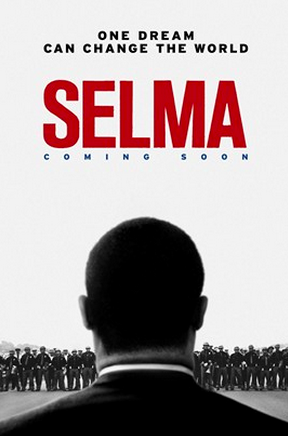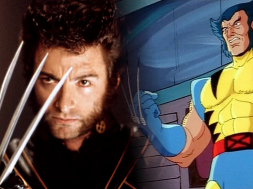
For this week’s Yesflix/Noflix we’re going to look at biopics (biographical films, sometimes written as bio-pics). That is two biopics addressing two historical figures, each taking two very different approaches. Both historical figures are African American and, as with many biopics, the stories they tell concern adversity and triumph. However, one should tread carefully when drawing lines of similarity.
First, we have Selma (2014), a film which tells of the lead up to the famous march for suffrage in 1965 led by Martin Luther King Jr. The events at Selma were instrumental in passing the Voting Rights Act. Then we have Ray (2004), a film which focuses on the life of singer-songwriter Ray Charles. On its face, the comparison might not seem entirely fair. After all, a film focusing on the life of an artist (any artist) might not weigh in well set against a figure so intrinsic to the Civil Rights Movement as MLK. Still, the films make for interesting contrast, not simply for the raw material, but how they address it too.
YESFLIX – SELMA (2014)
 Earlier this year, Selma sparked controvesy at awards season. The film received several Oscar nominations, including best film. However, actor David Oyelowo was not tipped for his role as Martin Luther King Jr., despite giving an impressive performance. The off-screen controversy is the result of the two nomination categories having different committees.
Earlier this year, Selma sparked controvesy at awards season. The film received several Oscar nominations, including best film. However, actor David Oyelowo was not tipped for his role as Martin Luther King Jr., despite giving an impressive performance. The off-screen controversy is the result of the two nomination categories having different committees.
Even so, that same off-screen controversy can only pale in comparison with what we find in the movie itself. The figure of King is often reduced to a shorthand for blanket statement moral goodness, a benevolent presence. The film works to undercut the image. We see King as an outrider. Even prior to Edmund Pettus Bridge, a scene which has already become iconic, the film conveys a visceral sense of danger. The bravery of those involved and of King as the movement’s figurehead is not sentimental.
Moreover, the film also provides a number of scenes taking a more personal look at the revolutionary reverend. In the midst of friends and fellow dissidents, we see King laugh and joke amid raucous conversation. There are also scenes of family life that show the frailty of King and those around him. As they sit down to dinner, we see them all make a silent attempt at normalcy, almost as an impersonation.
However, unlike many films in the biopic genre, Selma does not attempt to capture a life in totality. The clue is in the title. It focuses on the months leading up to the march at Selma, Alabama. The film does not start in King‘s childhood; it opens with him receiving the Nobel Peace Prize. The decision to begin in medias res has major benefits. It means the movie does not have to go about the unenviable task of trawling the raw material in order to select from it events that are competing for narrative supremacy. In so doing, the broader significance(s) are allowed to announce themselves without being strained.
Fans of Pride and Brassed Off will LOVE this!
NOFLIX – RAY (2004)
 Ray Charles (born Ray Charles Robinson) had a life that lends itself to the phrase ‘rags to riches’ with unsettling ease. The film has good qualities and not in short supply. The talent laden cast headed by Jamie Foxx is one of them. The photography is another. The transition between child and adulthood is marked by a change of filters; young Charles‘ world has a warmer tint resulting from a higher contrast. Most importantly, the film does not fail to deliver on the music. One of the most memorable music scenes is the development of the much-loved track, ‘Mess Around’.
Ray Charles (born Ray Charles Robinson) had a life that lends itself to the phrase ‘rags to riches’ with unsettling ease. The film has good qualities and not in short supply. The talent laden cast headed by Jamie Foxx is one of them. The photography is another. The transition between child and adulthood is marked by a change of filters; young Charles‘ world has a warmer tint resulting from a higher contrast. Most importantly, the film does not fail to deliver on the music. One of the most memorable music scenes is the development of the much-loved track, ‘Mess Around’.
With so many positives, one might ask what the problem is. It is all a question of writing. The script is the collaborative work of director Taylor Hackford and James L. White. To give it its due, the dialogue is good, managing to capture its central character in his manner and wit. However, the overarching narrative is one of grief-fueled drug dependence. Without giving too much away, the driving force of the movie is an event early in Charles‘ life. The portrayal of addiction is oversimplified to the point of being near counter-factual. Charles‘ drug taking was likely seen as the means of tying together the events his life was comprised of. Yet the treatment of the addiction is so reductive that is doesn’t feel germane. The result is that the move backfires, leaving a film that is made up of good individual scenes, but which doesn’t stand as a homogeneous whole.










